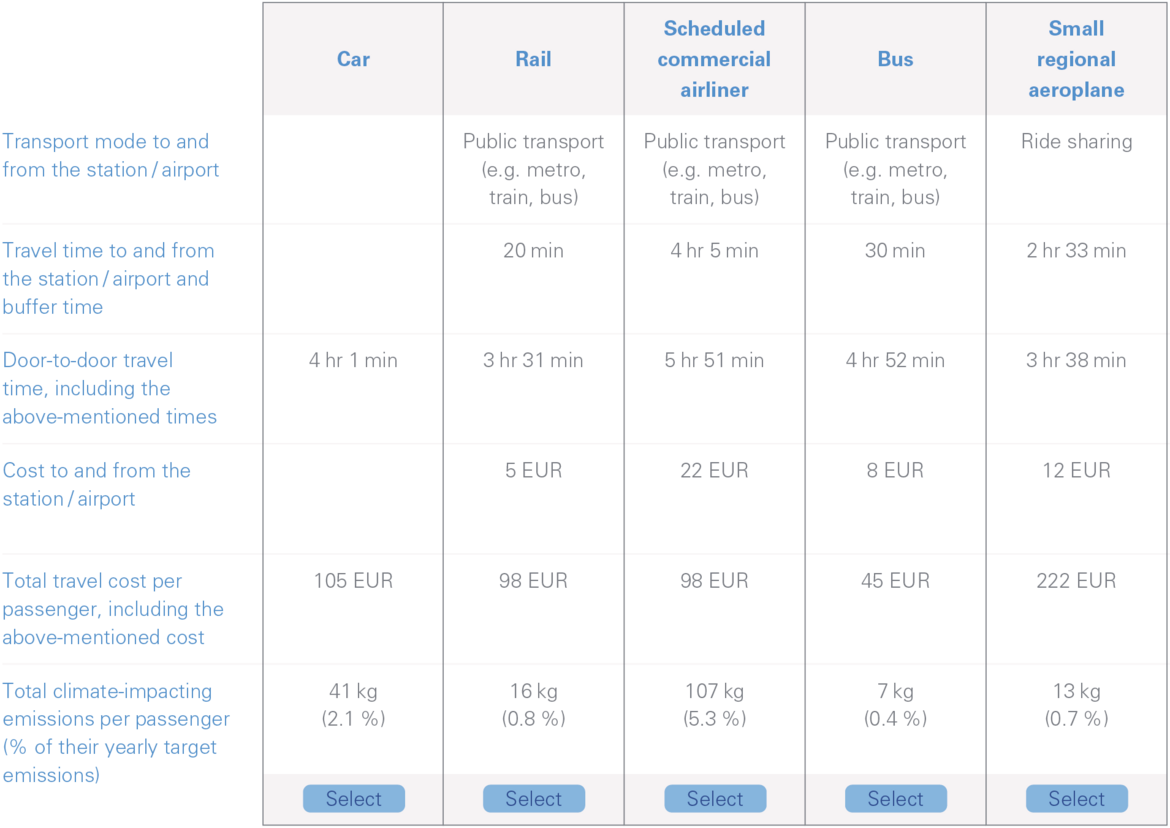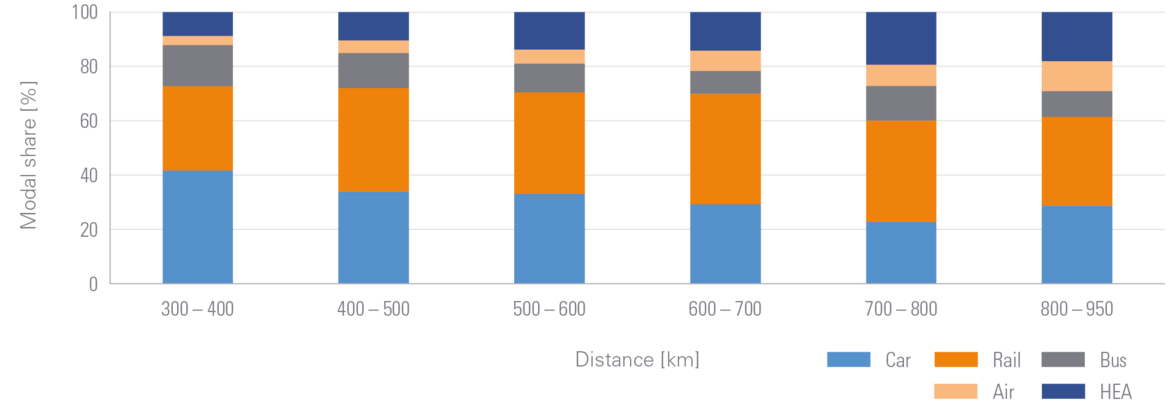Short-haul services, which could be based on hybrid-electric aircraft (HEA) concepts, provide many opportunities, such as increased comfort and higher time efficiency in reaching regional airports. Following our previous study regarding passenger acceptance of hybrid-electric aeroplanes in Germany, we have conducted a follow-up survey on passengers’ preferences for five transport modes providing regional transport services within Europe, including HEA. A central aim was to gain insights into what attributes respondents value about these means of transport and to identify the potential user segments. We analysed more than 1700 valid responses based on a representative sample of German residents. In general, HEA are perceived as more attractive than conventionally kerosene-fuelled airliners. For comparatively long routes, passengers also prefer HEA to long-distance buses. The statistical analysis shows that business travellers, frequent travellers, and respondents who are younger, with high income, and with trust towards new mobility technology tend to prefer HEA. A calculated generalised willingness to pay (WTP) shows that passengers are willing to pay 0.78 EUR on average to reduce one minute of travel time. Business travellers show a 50 % higher WTP than private travellers, indicating that business travellers could be the early adopters in the market entry phase. Interestingly, the potential for reducing the climate impact of travelling associated with HEA does not significantly affect travellers’ decisions and ranks low compared to other decisive criteria, such as travel time and costs.




